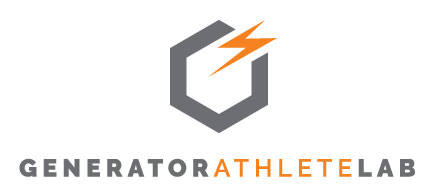HIIT: Is Less Really More?
The short answer is ‘Yes!’.
High Intensity Interval Training (HIIT) consists of short bursts of high-intensity exercise, such as sprinting, jumping rope, burpees, etc, followed by short periods of rest/recovery. A complete workout can take 30 minutes or less from start to finish. HIIT has become extremely popular over the past few years, but it’s not just a fad. There are plenty of scientific studies that prove HITT is an effective way to:
Increase oxygen intake (build endurance).
Burn calories.
Increase metabolism.
Reduce heart rate and blood pressure.
Reduce blood sugar
Increase insulin resistance.
You get all the benefits (and more) of longer, traditional workouts in half the time!
Runners have known for decades that using high-intensity sprint intervals and Fartleks as part of their weekly workouts will increase speed and build endurance. Now the same concept is being used in a gym setting for non-running workouts.
Most HIIT workouts today include both cardio and strength training in varying intervals but the key idea is to perform short bursts of a high-intensity, heart-pumping exercise followed by a shorter recovery movement. Then repeat. There are hardly any pauses in a HIIT workout, so you can do this in less than half the time of a regular workout. You can get a big calorie burn, rev up your metabolism, lose weight, gain strength and build muscle in 20 minutes.
These quick, high-intensity routines are designed to stress the body in all areas, from the heart to the muscle to the metabolic system. The body's response to that is to function more efficiently allowing us to get into shape quicker than with moderate-intensity exercise. Even five to 10 minutes of high-intensity exercise can deliver the same results as 45 minutes of moderate exercise.
You don’t have to be an athletic 25-year-old to benefit. You can adapt the routine to your own physical limits and achieve the same payoff. For example, if you're accustomed to jogging at a moderate pace, you might try pushing it up and go as fast as you can for a block or two before returning to your normal pace. Do that every five minutes or so during your jog.
Numerous studies concur that the health benefits are at least equivalent if not superior to traditional exercise of longer length. In one such study, exercise scientists compared people who did a HIIT plan for six weeks against people who did a traditional workout for six weeks. They found the HIIT group saw essential the same improvement in heart health and muscle tone, but the benefits were gained much sooner, in less than half the time.
Another study found that eight weeks of HIIT on a stationary bike decreased blood pressure as much as traditional continuous endurance training in adults with high blood pressure. Researchers have also repeatedly shown the calorie burning benefits of HIIT routines lasting 20 minutes, compared to longer continuous exercise routines lasting 50 minutes.
A summary of 50 different studies found that not only does HIIT reduce blood sugar, but it also improves insulin resistance more than traditional continuous exercise. High-intensity exercise is particularly beneficial for those at risk for type 2 diabetes. However the benefits are not just for those at risk for diabetes, more research indicates that HIIT may improve insulin resistance in healthy individuals better than traditional continuous exercise.
So what are you waiting for? If HIIT isn’t already part of your workout routine, come join us at Generator for a 30 minutes HIIT class in a small-group setting. After class, take time to recover using Generator’s #TheProtocol routine including our infrared sauna, hot-cold contrast tubs, Normatec compression boots, vibration plate, and more.
